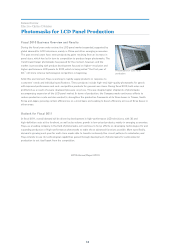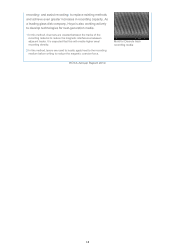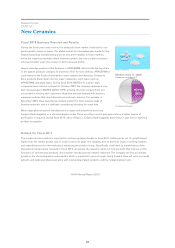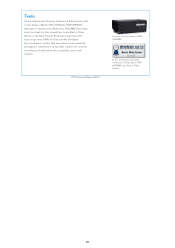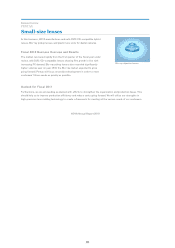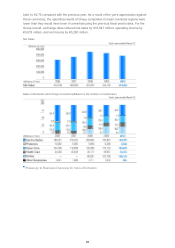Pentax 2010 Annual Report Download - page 23
Download and view the complete annual report
Please find page 23 of the 2010 Pentax annual report below. You can navigate through the pages in the report by either clicking on the pages listed below, or by using the keyword search tool below to find specific information within the annual report.
ultrathin video laryngoscope
(VNL-90s)
Twin mode (left:nomal image,
right:i-scan image)
Ultrasonic videoscope
(EB-1970UK)
Business Overview
PENTAX
Fiscal 2010 Business Overview and Results
In fiscal 2010, the medical endoscopes market felt the effects of the 2008 financial
crisis, with capital expenditures by medical institutions mainly in developed
economies falling off sharply, and with many U.S. medical institutions paying close
attention to developments in U.S. healthcare system reform. As a result, the
European and North American markets contracted year on year. Meanwhile,
markets expanded in emerging economies such as China, which is building up its
healthcare systems.
Against this backdrop, sales fell year on year in the medical endoscopes business,
which derives a high proportion of sales from overseas, due to restraint and
postponement of capital expenditures by European and North American medical institutions and to the major impact of
the strong yen.
In fiscal 2010, an ultrathin video laryngoscope released in September 2009 (VNL-90s) and a ultrasonic video
bronchoscope put on the market in the previous fiscal year received strong acclaim, contributing to sales. The
otolarynogical field is currently shifting from using fiberscopes to using high-resolution videoscopes, and the VNL-90s
has an outer tip diameter as narrow as 3mm, while still retaining the high image quality of conventional scopes.
With regard to image processing, the Company upgraded the software for its
EPK-i high-resolution endoscope system, and added a new "twin mode" which
improves on the observational power of conventional single-screen models through
a function that enables physicians to simultaneously view both standard and special
displays. This new feature has earned attention in the medical world. The
expansion of the lineup of upper and lower digestive tract endoscopes in the EPK-i
series, which launched in 2007, is almost complete. Now able to meet a wide range
of customer needs, this enhanced lineup will lead to higher sales in fiscal 2011 and
beyond. With a view to full-fledged global development going forward, the Company
also appointed personnel with a firm track record in the business in the U.S., which represents the largest market, to top
positions in the division, and reviewed its business strategy.
Outlook for Fiscal 2011
Going forward, there will likely be increased demand for flexible endoscopes with higher-function image-processing
technology and greater operability to help physicians perform accurate and quick diagnoses. In fiscal 2011, market
conditions will remain uncertain in light of U.S. healthcare system reform and economic trends. Nevertheless, Hoya
intends to continue to strengthen collaboration with doctors, and to focus on developing products that respond
accurately to frontline medical needs. The Company will also further enhance marketing efforts in China and other
emerging economies.
The EB-1970UK ultrasonic videoscope, which enables physicians to observe
at depths of 1-5 cm from the surface structure, is unique as the first
ultrasonic bronchoscope with a CCD on the tip. In fiscal 2009, Hoya
launched the EB-1970UK in Europe and North America, and in fiscal 2010,
the Company saw growth in demand from advanced medical institutions in
both regions. In areas where precise observation and diagnosis are
required, such as examining the lymph nodes around the bronchial tubes for
signs that cancer has spread, the device has won praise for its high
resolution and ease of use.
HOYA Annual Report 2010
22


